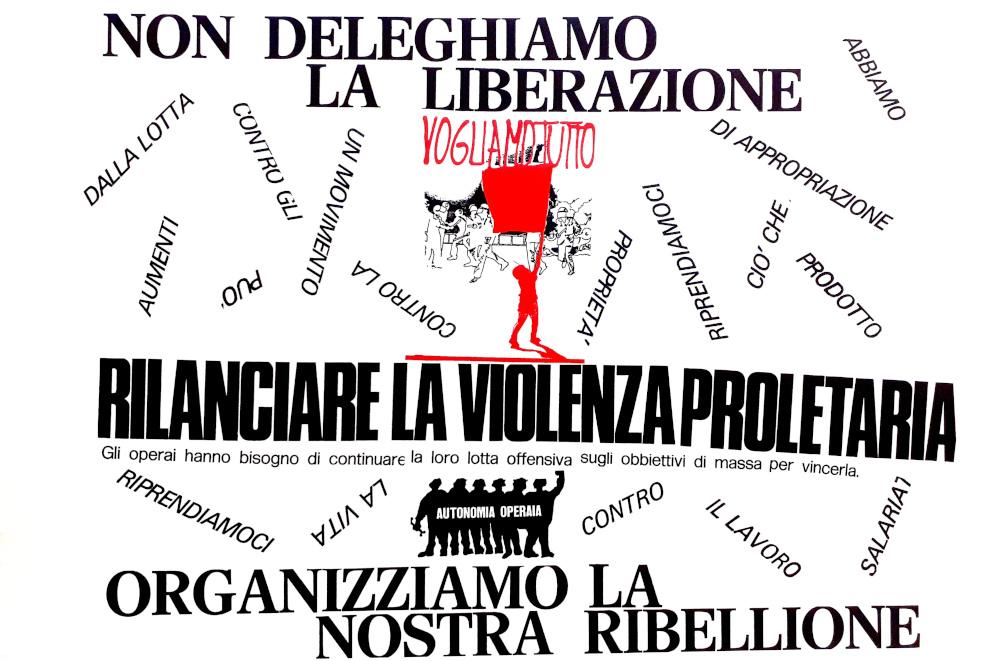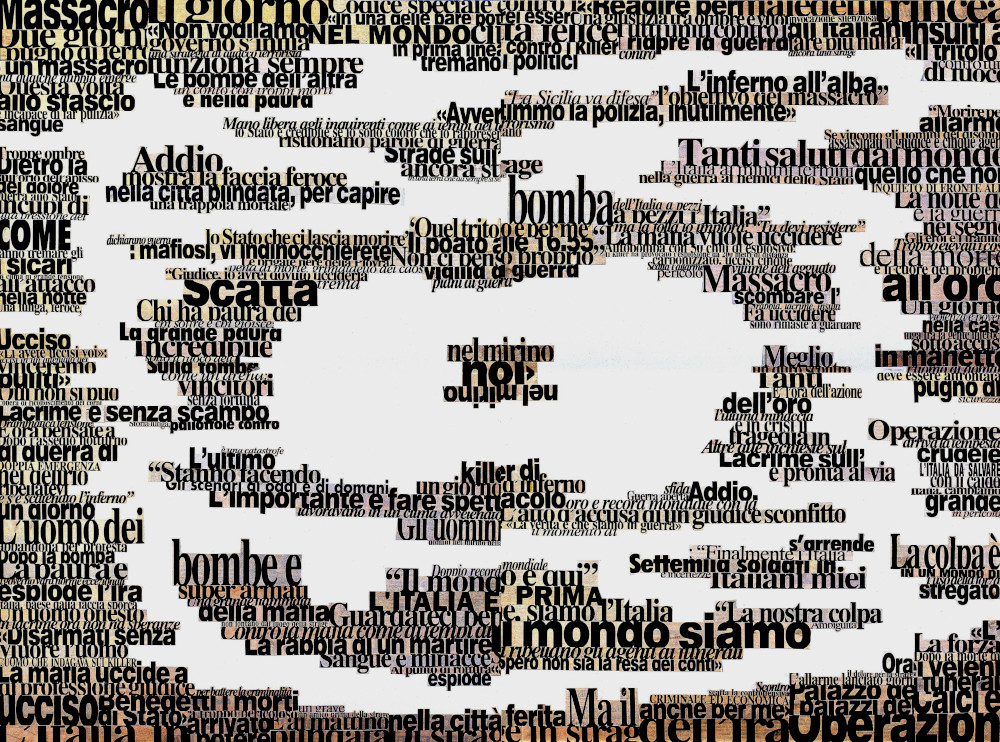Illustrated Violence
Nanni Balestrini
19.03.2021 – 23.05.2021
Curator: Valentín Roma
This show constitutes the first Spanish exhibition featuring the artistic, political and publishing career of Nanni Balestrini (Milan, 1935 – Rome, 2019), presented in a comprehensive itinerary. Balestrini was one of the most relevant Italian intellectuals to emerge in the 1960s, and was one of the most firmly committed to the processes of aesthetic and ideological dissidence taking place in Italy in the period. It also represents the first exhibition of a body of documentary material from his personal archive.
Organised in collaboration with the Soprintendenza archivistica e bibliografica of Lazio, the exhibition, which takes its title from a Balestrini novel from 1976, is articulated in four chronological sections. It also represents the first exhibition of a body of documentary material from the author’s personal archive.
The first section, which covers the period from 1961 to 1969, brings together Balestrini’s poetic and visual production of the time, while also focusing on his activity with Gruppo 63 and his earliest work with digital technology (such as Trade 1, 1961). It also includes his collaborations with musicians such as Luigi Nono and Hans Werner Henze.
The second section, taking us from 1969 to 1979, explores Balestrini’s contribution to the dissident activity of Potere Operaio and Autonomia Operaia. Other aspects in the section include: the novels Vogliamo tutto (1971), La violenza illustrata (1976) and Vivere a Milano (1976) with photography by Aldo V. Bonasia; the poetic cycle of the Signorina Richmond and the various radio plays written for the RAI in 1973; the founding of the magazines Compagni (1969) and the mythical Alfabeta (1979); and, finally, the political process known as Processo7 aprile, where he was legally incriminated, leading to his exile to Paris in 1979. Works that stand out from this period are his collages using newspaper headlines and images from the mass media, as Balestrini created a language that combined discrepancy, political agitation and poetry.
The third section focuses on the period from 1980 to 1999, when his writing activity was more intense, as he published as many as fifteen different volumes, including novels, poetry anthologies and experimental books. It was in this period that key works were released, including Blackout (1980), Gli Invisibili (1987), L’orda d’oro, with Primo Moroni (1988), L’Editore (1989) and I furiosi (1994), amongst others. During the period he was in exile he also founded the newspaper Change International (1983), while back in Rome, where he returned in 1984 after his absolution, he started the journal Bestia (1997). In 1995 his collaborations with the Franco-German cultural television station ARTE began, along with the cultural channel RAISAT. Furthermore, in 1999 he created the internet cultural television channel Raisat Zoom. In 1993 he participated in the Venice Biennale, while his work continued to broaden to include research into non-verbal language, while also exploring social concerns, as seen in work employing objects and materials from everyday consumption.
The fourth and final section features a review of Balestrini’s work from 2000 to 2019, along with his most important books: Parma 1922. Una resistenza antifascista (2002), Tutto in una volta (2003), Sandokan. Storia di camorra (2004), Carbonia. Eravamo tutti comunisti (2013), La nuova violenza illustrata (2019) and the three-volume edition of his Poesia completa (2015-2018). His most significant work includes L’ombelico del mundo, a television programme for the RAI, directed along with Paolo Fabbri, Sergio Opina and Lello Voce, the poem-opera Eletta (2001) and Tristanoil, an experimental piece shown in Kassel at the 2013 documenta. The section also presents a selection of work from the series La Tempesta perfetta (2015), where Balestrini explores the visual and linguistic ramifications of the Giorgione painting The Tempest (1508).
Illustrated Violence is part of a series of relatively autonomous exhibitions within the programming of La Virreina Centre de la Imatge. The series explores the careers of creators considered seminal for their work in a diversity of epistemological, aesthetic and political ruptures taking place over the past sixty years. All of these creators—Alexander Kluge, Copi, Ketty La Rocca, Paula Rego, Susan Sontag, Barbara Hammer and Nanni Balestrini—were born in the 1930s.










